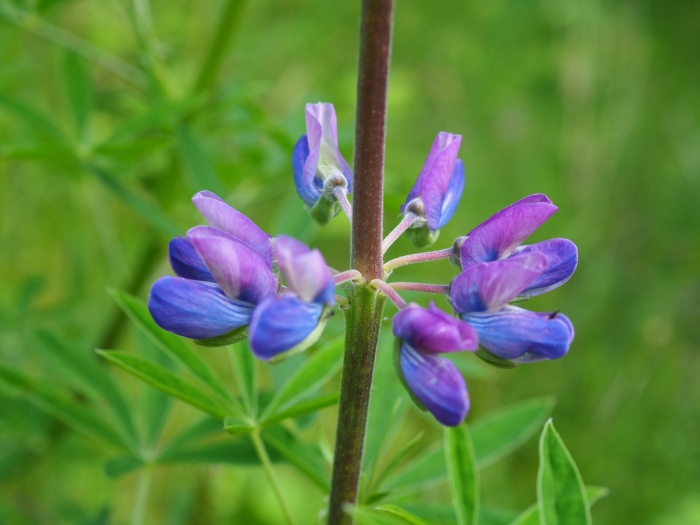Riverbank Lupine
(Lupinus rivularis)
Riverbank Lupine (Lupinus rivularis)
/
/

© Peter Abrahamsen
CC BY 4.0
Image By:
© Peter Abrahamsen
Recorded By:
Copyright:
CC BY 4.0
Copyright Notice:
Photo by: © Peter Abrahamsen | License Type: CC BY 4.0 | License URL: http://creativecommons.org/licenses/by/4.0/ | Uploader: rainhead | Publisher: iNaturalist |
























Estimated Native Range
Summary
Lupinus rivularis, commonly known as Riverbank Lupine, is a perennial herb that is native to riparian zones, moist meadows, and coastal dunes in western North America, ranging from British Columbia to northern California. It typically grows up to 3 feet tall and features spikes of light purple flowers that bloom from late spring to early summer. The flowers are showy and attract pollinators such as bees and butterflies. The foliage is palmate with leaflets radiating from a central point, giving the plant a distinctive appearance.
Riverbank Lupine is valued for its ability to fix nitrogen in the soil, improving soil fertility. Its deep root system makes it useful for erosion control, and it serves as a food source for wildlife, particularly the larvae of the endangered Mission Blue Butterfly. In gardens, it is appreciated for its ornamental qualities and is often used in native plant gardens, restoration projects, and for natural landscaping. It requires well-drained soils, preferably sandy, and thrives in full sunlight. While it is endangered in British Columbia, it is not considered at risk in other parts of its range. Care should be taken to source plants ethically, especially in areas where it is endangered.CC BY-SA 4.0
Riverbank Lupine is valued for its ability to fix nitrogen in the soil, improving soil fertility. Its deep root system makes it useful for erosion control, and it serves as a food source for wildlife, particularly the larvae of the endangered Mission Blue Butterfly. In gardens, it is appreciated for its ornamental qualities and is often used in native plant gardens, restoration projects, and for natural landscaping. It requires well-drained soils, preferably sandy, and thrives in full sunlight. While it is endangered in British Columbia, it is not considered at risk in other parts of its range. Care should be taken to source plants ethically, especially in areas where it is endangered.CC BY-SA 4.0
Plant Description
- Plant Type: Shrub, Herb
- Height: 1-5 feet
- Width: 2-3 feet
- Growth Rate: Rapid
- Flower Color: Blue, Pink, Purple
- Flowering Season: Spring, Summer
- Leaf Retention: Deciduous
Growth Requirements
- Sun: Full Sun, Part Shade
- Water: Medium
- Drainage: Fast, Medium
Common Uses
Bee Garden, Butterfly Garden, Erosion Control, Low Maintenance, Showy Flowers
Natural Habitat
Native to riparian zones, moist meadows, and coastal dunes in western North America
Other Names
Common Names: Streambank Lupine, River Lupine
Scientific Names: , Lupinus rivularis, Lupinus labiatus, Lupinus lignipes, Lupinus rivularis,
GBIF Accepted Name: